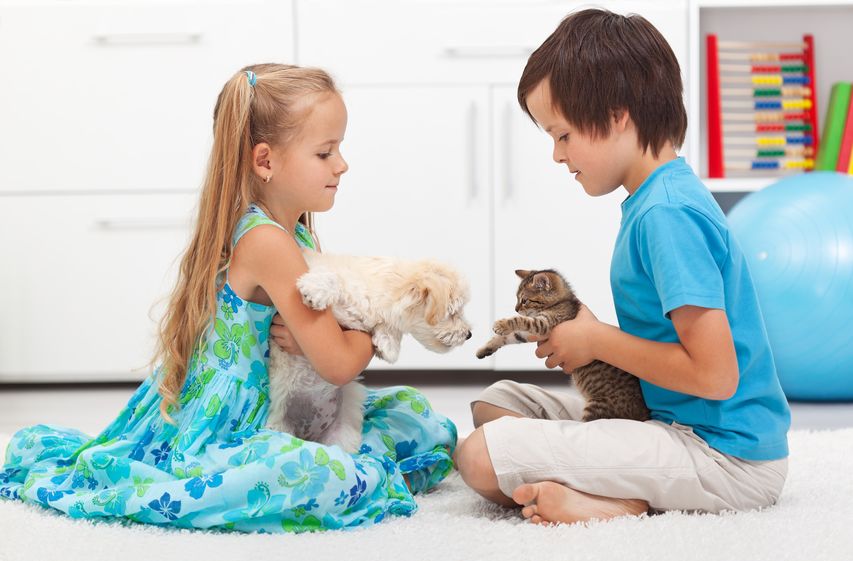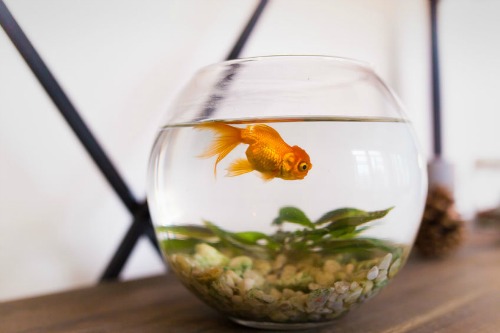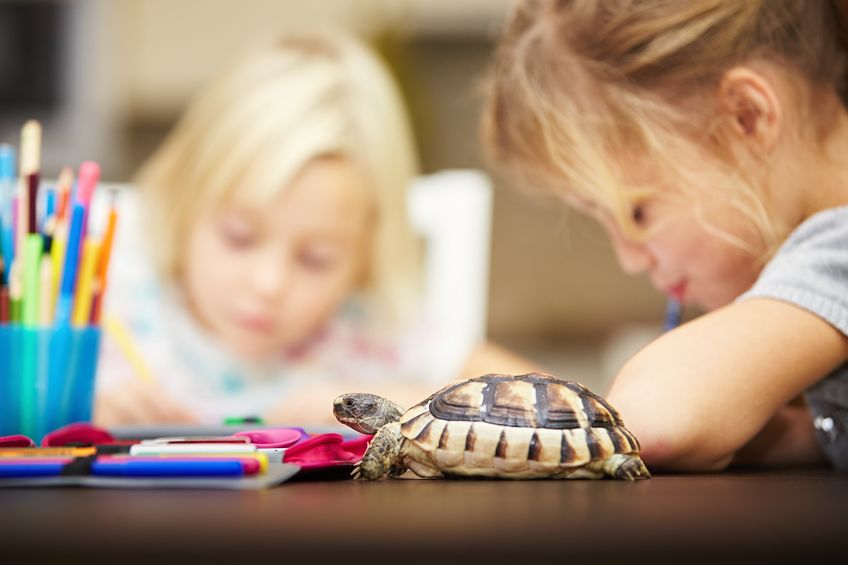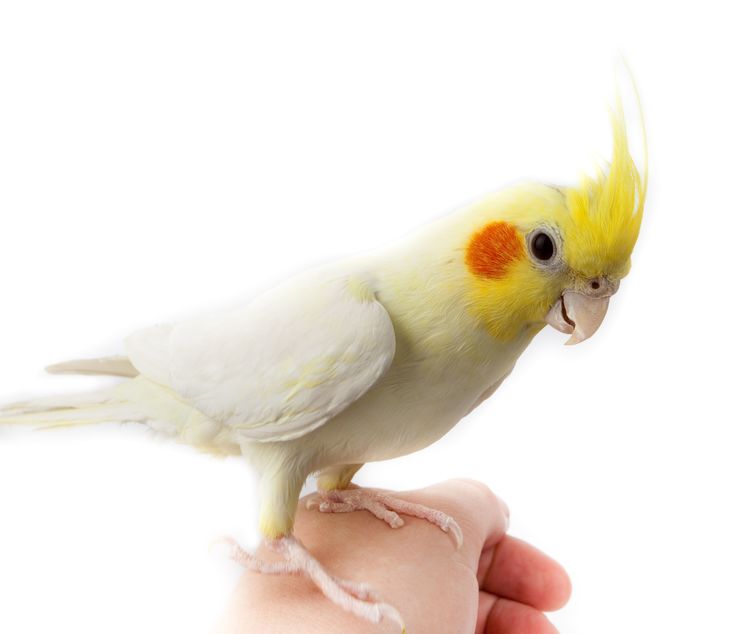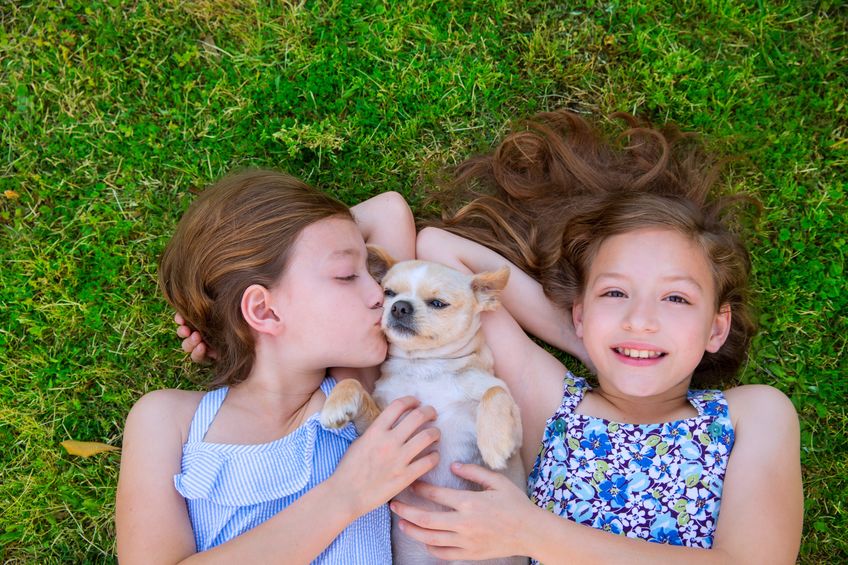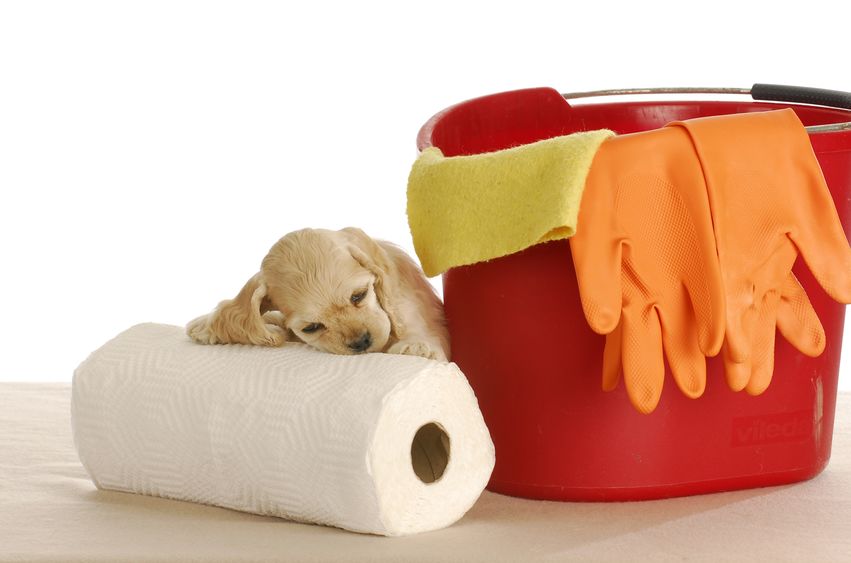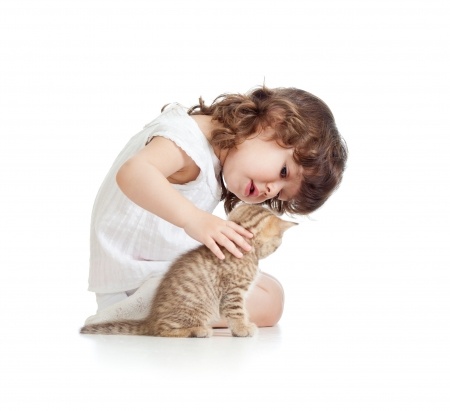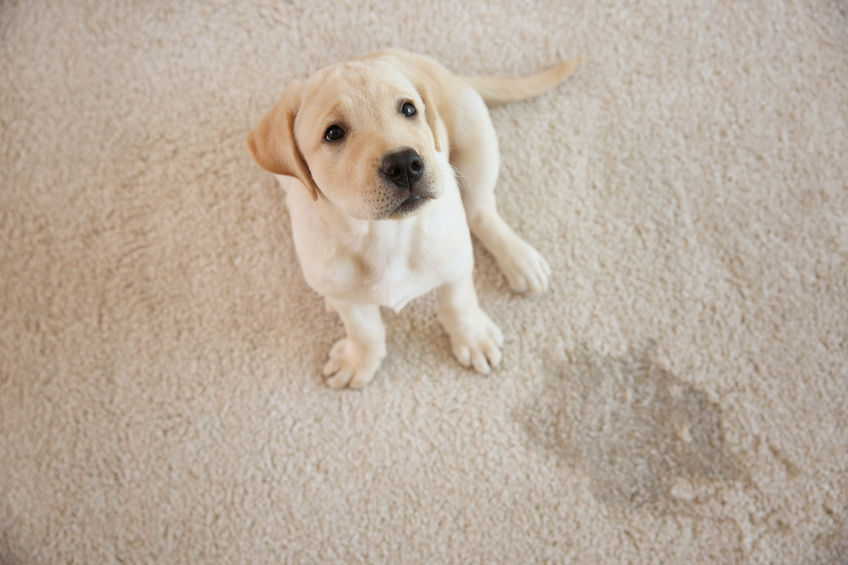Best Pet For Kids By Age
Best pet for kids by age. The key to choosing the best pet for kids is finding one whose maintenance requirements fit a child's age and maturity level.
There are low-maintenance pets (fish, lizards) and high-maintenance pets (parrots, exotic animals).
Predictably, younger children are usually better suited for lower-maintenance pets, while school-age kids and teenagers are better equipped to handle the medium—to high-maintenance variety.
Here's a quick look at common pets for kids, ranked from lowest to highest maintenance, to help you choose the best pet for kids by age.
The Best Pet for Kids By Age Isn't An Impulse Buy
The best pet for kids by age is rarely an impulse buy. No pet should be an impulse buy. Don't give in to whining and pleading as you pass a pet store.
A pet will cost you a lot of time and money and will be with your family for its entire life.
To make pet ownership a positive experience, research before bringing a pet home. You want to know precisely what you are getting into with the type of animal you're considering.
If they're old enough, consider having the kids do the research and present it to you for consideration. Then, steer them in the direction of easy pets to get started.
The best pet for kids may be the one the kids spend the most time researching.
After all, if the kids have to research the pet and wait for it, they are more likely to appreciate it and help care for it once they bring it home.
Best Pet for Kids By Age: Low Maintenance Animals
Low maintenance animals are a best pet for kids by age - especially if they're under age 6. These are pets that only require a little nurturing or special care.
They don't require grooming, walking, or even petting. They just need the basics: food, water, and shelter. These are good starter pets. They also offer the least payback in terms of returning love and affection.
Pet Fish
Fish are a best pet for kids: Most freshwater fish are inexpensive to buy and maintain after the initial investment of a tank or bowl and accessories.
Some fish are hardier than others, however. For small kids, go for inexpensive, durable fish like goldfish. You don't want floaters to start your child's pet career.
Go for a solitary goldfish or beta in a simple bowl. If that's a hit, you can move on to an aquarium. Lighted aquariums can even function as nightlights in a child's bedroom.
Maintenance will be only feeding once or twice a day and cleaning the bowl once a week. And if you keep the aquarium away from direct sunlight, algae will grow more slowly.
Reptiles and Snakes
Reptiles and snakes can be a best pet for kids, depending on a child's interest level. Little boys (and some little girls) love lizards and snakes. Most moms don't.
If your kid will have a lizard or snake, be sure there's an adult in the house willing to handle it.
You've got to have that backup person with pets. In other words, Dad's the go-to guy on this one.
Put the reptile in an aquarium with a locked top. You don't want Timmy (or Tiffany) taking it out without your supervision. Avoid large snakes, such as pythons, that might ingest small children.
Research reptiles and their living requirements to find the best pet for kids in your home. Some require live (shudder) food.
If you are determined, however, at least get a snake trained to accept frozen mice instead of the live, running-around variety. Then, all you have to do is heat (to room temperature) and serve.
Some reptiles, like iguanas, grow to five feet long and can be hazardous to other pets. Some (such as pythons) can grow to 13 feet long and be dangerous to everyone.
Don't forget to ask how large the reptile will be in adulthood. 'Nuff said.
Even though reptiles are relatively sturdy, they are still living creatures. Never let young children handle them unsupervised.
The best pet for kids in this category is a tame reptile that does not try to bite. Good lizard choices are a bearded dragon or a gecko. Good snake choices include a corn snake, rat snake, or king snake.
While reptiles and snakes are easy to care for, you'll want to consider their needs before bringing one home: a tank, lights, water, and food.
Lizards need places to hide and things to perch on. Tropical or desert reptiles will also need a heat source, which is not cheap.
For example, the bearded dragon requires a 10-gallon terrarium with a screen top for the first year and a 40-gallon terrarium as he grows (very, very fast) up to 18 inches.
Many reptiles are omnivores, which means they eat fruit, vegetables, steak, and mice as well. Feeding them is not a simple matter of dropping in some pellets each day.
Reptiles don't need much exercise (though if you released one near me, I would get a lot of exercise), and they don't need much attention.
Figure out 15-30 minutes daily to feed them and about an hour a week to clean the tank.
Tortoises and turtles are other good reptile choices. Turtles are amphibians; tortoises are land creatures.
Make sure you provide the right environment for your species. Turtles can be quite affectionate and long-lived: 30 to 40 years for the box turtle.
Even though they look sturdy, do not drop them because doing so could injure their shells or internal organs. Tortoises, in particular, should not be handled often.
Best Pet For Kids By Age: Rats and Mice
Rodents like rats, mice, gerbils, and hamsters are best pets for kids ages 6 and under. They make excellent starter pets.
They are small, furry, and cuddly. When the kids aren't playing with them, they happily stay in their cages.
Other advantages? They are quiet, not very messy, and relatively easy to care for. They usually are inexpensive to buy and maintain.
First, you should know that mice are not baby rats. They are two different species with distinct personalities.
Rats are exceptionally intelligent and friendly despite their nasty-looking tails. Mice are cute and fun to watch in the cages but squirmy and nippy for holding and loving.
If you want a love bucket, get a rat. Hold them at the store, and if the rat or mouse is a nipper, request another one.
Also, the younger you get them, the easier they are to tame and bond with.
Male or female? Good question. Male rat urine can be a bit smelly, plus males will mark territory with a drop of urine - a drawback if you let him out a lot.
On the other hand, males are a lot calmer and more loving. If you change the litter at least once a week, the smell should not be an issue.
You'll need a special place for the rat cage. Shavings can be messy. And the cages take up a lot of room. Each rat needs a minimum of two cubic feet. So, if you had a rat couple, that would mean a cage 2 feet by 2 feet by 2 feet.
Rats must be allowed to run around for at least a few minutes daily. You (or the kid) must supervise this outing, as they like to nibble through telephone cords and electrical wires.
And, of course, you don't want them getting lost in your walls or closets, either. Rats live two to four years; mice one to three.
Small Birds Are A Best Pet For Kids Age 8 and Up
Birds are usually not a best pet for kids under the age of 8.
Kids below this age aren't gentle enough to properly care for them. Young kids dart about and alarm birds.
Small birds, however, make excellent pets for older children. If you buy a hand-raised bird, it should bond readily with its new owner and be relatively tame as long as it is handled regularly and gently.
Small birds are easy pets because they are generally confined to the cage and cannot wreak too much havoc.
You only need to change the papers in the cage each day and replenish its food and water. You'll need to do a more thorough cleaning about once a week.
Cockatiels and parakeets are excellent choices. The smaller birds, such as finches and canaries, are mainly for watching, not petting.
Best Pet For Kids By Age: Cats
In my prejudiced mind, cats are the best pets for kids. They are sweet and cuddly, and they're low maintenance—you can go away for a weekend and just leave out food and water for them.
They're not messy - indeed, they are fastidious and will look at you in dismay if you neglect to clean their litter boxes regularly.
Of course, they have drawbacks. They shed, and many people are allergic to them. If you don't provide alternate places to scratch, such as a cardboard or carpeted scratching post, they can shred furniture and floor coverings.
They are relatively long-lived (about 15-20 years); if you keep them indoors, they are usually healthy animals. Don't get kittens for small children.
Cats between 1 and 3 have all the kitten attributes but are a bit hardier and can easily escape rough little hands. Be careful when introducing a new kitten into a house with another cat or dog.
Medium Maintenance Pets: Dogs
I have a bias here. I disapprove of entirely outdoor pets. They get neglected, especially during the winter months. I feel if you have a pet, it needs to come inside and be part of the family - at least occasionally.
Plus, outdoor pets have shorter, unhealthier lives (thanks to cars and other hazards). And they are more likely to transmit disease or pests like fleas and bacteria to your family.
Dogs go through a golden age about halfway through their lifespan, when they are housebroken and calm. They no longer chew on your shoes and usually come when called.
This golden age only lasts a few years. Dogs can be a lot of work at the beginning and the end of their lives.
Puppies need house training, and they need to learn the rules of the house. Otherwise, they might chew up everything. They are rowdy and rambunctious.
With a puppy, you need someone at home full-time for the first few months. Fortunately, they are adorable, too, so there's a payoff.
Old dogs revert to puppyhood in many ways. They can't hold their bladders, and accidents occur. For health problems, multiple trips to the vet may be required.
Fortunately, by this time, they're one of the family, so you bite the bullet and clean up after them just like you would for Uncle Harry.
For the biggest payoff, get a long-lived dog, so those golden years will be worth the effort on both ends.
Small breeds tend to live longer than large breeds. On the negative side, small breeds are often noisier and more frenetic than larger dogs.
If you are a control freak wanting to make the best choice for your home, consider buying a purebred.
You can get great dogs at your local animal shelter. And you'll be doing society and nature a favor. But if you have specific requirements, look through the books, and there will be a breed that meets these requirements.
My friend Kim, for example, wanted to get a dog for her daughter. Her husband did not want a dog. Repeat. No dog.
Ok, she asked, but why don't you want a dog? Because he said it would tie us down. It will chew up the house. It will terrorize the cats. It will mess up in the house. It will shed. I'm allergic. It will bark. We'll have to walk it.
Kim and her daughter plunged headfirst into every dog book they could access and emerged with a couple of breeds that fit his specifications.
Five years later, proud daddy loves to walk the little Shih Tzu around the neighborhood.
You can buy a calm dog, a hyper dog, a watchdog, or a lap dog. You can buy a dog that doesn't shed and doesn't bark.
Whatever you want is out there.
But realize that large dogs usually need lots of exercise. And any dog needs a good 20-minute walk at least twice a day.
And unlike cats, you can't just run off for the weekend and leave them. Dogs are pack animals. They need people around. They also need to be walked, fed, and watered. Frequently.
Think about how much spare time and energy you have before you say yes to a dog.
High Maintenance Pets: Not A Best Pet for Kids By Age
In the high maintenance category, you can put large birds, such as parrots and cockatoos, and any exotic animal.
These pets require more attention, expensive cages or habitats, and specialized vet care. And try to find a pet sitter for them when you go on vacation.
These are not usually the best pets for kids. They often see children as something below them in the pecking order, and that is not good.
If you would like an exotic pet, that's one thing. But don't get one just for the kid.
Parrots and cockatoos make cool conversation pieces. They are fun and comical and easy to train to do tricks. They are very social birds that bond readily with people. But they are also loud; they screech.
They are messy and destructive. If you ignore or neglect them, they become self-destructive and pick their feathers out. And they live 70 to 80 years. Just think of signing on for a 2-year-old who will never grow up. Ever.
Before You Agree to a Pet
Finally, before you ever give the nod to any pet, have a serious talk with your child. Discuss the costs and responsibilities the pet entails.
Discuss who's going to do what and when. Discuss consequences. Draw up a contract spelling out:
- What kind of care the pet will need. Set times each day for watering, feeding, etc. Spell out how often cages will be cleaned and when.
- How the pet will affect his life and schedule.
- The costs associated with the pet.
- How he can help offset costs.
When a child neglects a pet (instead of a litter box) have a consequence ready. There have to be consequences.
Do not make giving up the pet a consequence of not caring for it. You are only teaching her that animals are dispensable. Do you want her to get rid of you later on when she loses interest?
Once acquired, pets are part of the family unless someone develops an allergy or other medical condition or the animal starts biting. Pets are a serious commitment for the whole family.
Have A Story About the Best Pets for Kids?
Do you have a best pets for kids story? Share it!
- Clean Home
- Family Pets
- Best Pet for Kids
